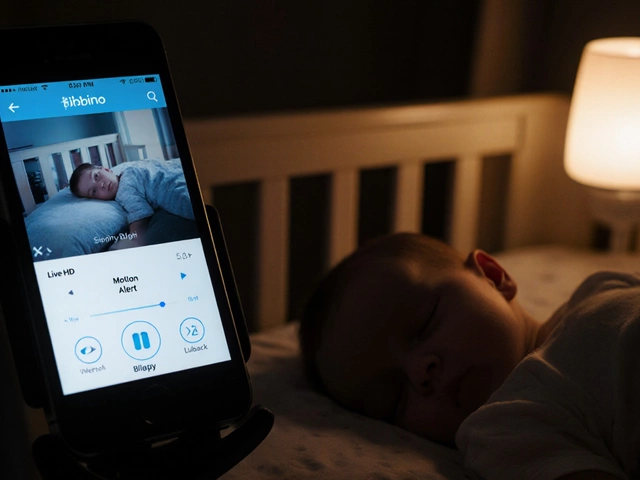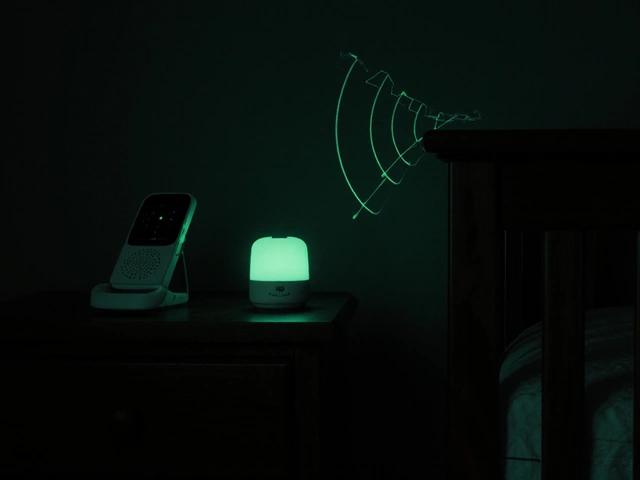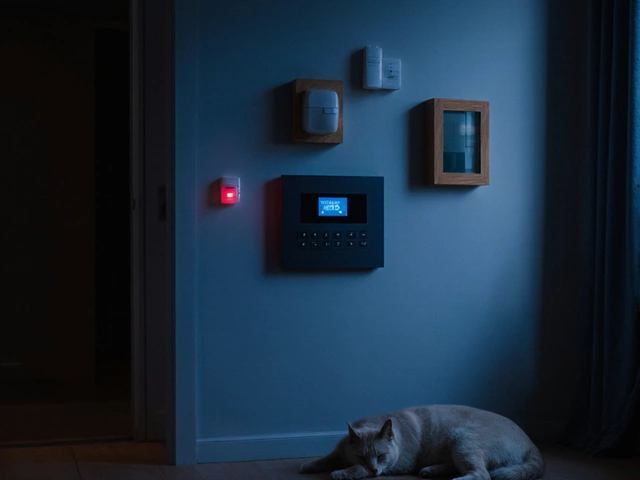Few things get the adrenaline pumping faster than your house alarm howling out of nowhere—right after your dog barrels past the living room sensors. If you have a furry friend who keeps triggering those piercing sirens, you’re definitely not alone. Tons of new pet owners deal with this problem, even after they spend big on smart home security systems. But here’s the kicker: nearly every modern alarm can be trained to ignore your dog if you set it up right. Figuring out how to get there, though, is where most folks get tripped up. Even Olivia and I once got a call from our alarm company during a walk because Rufus (our golden retriever mix) decided to chase his own tail a little too close to the motion sensor.
Why Dogs Trigger House Alarms (And Why It’s Not Your Alarm’s Fault)
Ever wonder why alarms seem to despise your four-legged buddy? It boils down to the way most standard motion sensors work. Most sensors, especially PIR (passive infrared) types, don’t know the difference between a burglar creeping along your hallway and a 70-pound pooch doing zoomies. They just detect changes in heat and movement. If your dog’s big enough or enthusiastic enough, those sensors light up like Christmas. Even smaller breeds can trigger an alarm if they like to jump on the couch or paw at windows within the sensor’s "detection cone." And here’s a wild stat: according to a survey by the Electronic Security Association, nearly 55% of all residential false alarms are blamed on pets under 80 lbs.
That doesn’t mean your sensors are broken or low-quality. In fact, PIR tech has been around since the 1980s and works great for human movement. Dogs just happen to overlap that "human-like" movement range more than most people realize. The real trouble starts because most installations, by default, assume you don’t have a large pet. If the technician doesn’t ask or you don’t mention it during setup, there’s a high chance your sensors are sitting right at Scooby’s favorite napping spot.
There are also other factors making your dog a walking false alarm factory. Some alarms rely on glass-break sensors, which pick up on sharp noise frequencies. Dogs with higher-pitched barks or yappers can sometimes accidentally trigger these mics. Even the thump of a big tail against a glass door at 3 a.m. has done the deed in my house. Point is, dogs aren’t out to get your alarm. The real issue is making your tech as pet-friendly as your home is.
Understanding Pet-Immune Sensors and Pet-Friendly Alarm Features
The pet industry is massive in the US—almost $137 billion last year. Security system makers have noticed, too. That means newer alarm panels and sensors almost always offer 'pet-immune' modes or sensors. These are designed to filter out signals from smaller or lower-to-the-ground motions—think anything under 40 pounds or, if you splurge, up to 80 pounds. How does that work? Pir sensors in pet-friendly setups usually angle their detection pattern upwards or use dual beams—one above the floor, one higher up—so anything moving low (like a dog but not a person) gets filtered out.
There are pros and cons here. Some systems are more accurate than others, and, let’s be real, the sensor's "pet weight rating" can be wishful thinking if your dog is a jumper or stands tall. Ever seen a border collie vault over a baby gate? That’ll blow right past the most advanced filter. You need to pay attention to both your dog's weight and typical activities. If your golden retriever likes to launch herself at front windows every time a squirrel appears, you’ll want to keep that window area outside any armed zones.
The newer generation of smart home alarms, especially those linked with mobile apps, offer even more advanced settings. Some brands let you disable specific sensors (like the living room sensor in the day). Others feature AI-powered cameras with animal shape recognition, so you get push notifications but not a screeching alarm. But at the core, traditional PIR pet-immune sensors are your first line of defense. When shopping, look for brands that list a pet weight limit and ask how sensors are installed. Don’t fall for the “pet-proof” marketing without specifics. Ask the installer—or your provider—to demonstrate how the sensor handles pet movement versus a full-grown adult.
Check out this quick table comparing common sensor types and their typical pet-immune range:
| Sensor Type | Pet Weight Limit | Key Feature |
|---|---|---|
| Standard PIR | Up to 40 lbs | Detects motion via heat change |
| Dual-Tech Motion | Up to 80 lbs | Combines infrared and microwave |
| Smart Camera (AI) | No set limit | Recognizes shapes and movement |
| Glass-Break Sensor | N/A (not pet-immune) | Detects frequency changes (can be triggered by barking) |

Top Tricks for Preventing Your Dog from Triggering Alarms
You can't exactly ask your dog to stop moving (if only life were that easy). But you can adjust your home and your security setup. After me and Olivia dealt with not one, not two, but three "dog alarms" in a month, we got pretty creative. Here’s what actually worked—not just what the sales brochures claim.
- Adjust Sensor Angles: If your motion sensors tilt down too far or point directly at dog-height windows or couches, adjust them higher or sideways. Many wall sensors pop open to let you angle them up 10 or even 20 degrees. This often makes a huge difference for larger dogs who like to roam.
- Move Furniture: Dogs that jump up on couches or beds may lift themselves right into the detection zone. For stubborn cases, rearrange your room so 'dog perches' are out of sight of sensors, or install pet barriers to block access.
- Zone Your Alarms: Most good alarm panels support multiple "zones" or custom settings. If you crate your pup in a certain room during the day, arm all the other sensors but leave that one off. Some panels even allow schedules so sensors switch modes automatically based on time of day.
- Use Camera Verification: If you get lots of alerts but don’t want false alarms blaring, set up an indoor camera linked to your alarm app. Many smart home platforms let you check footage in real time to see if it's your dog or an actual intruder. Some, like Ring and SimpliSafe, now filter alerts based on animal vs. human movement.
- Go for Pet-Immune Sensors: If you haven’t upgraded recently, see if your alarm company has pet-immune or dual-tech sensors. They’re usually not much pricier, but cut down false dog alerts by half or more. If you have big dogs, spring for the 80 lb. rated models.
- Keep Your Dog Calm at Alarm Times: Dogs who freak out when you leave are more likely to set off an alarm while you’re gone. Leave a favorite chew toy, play white noise, or try pheromone sprays that help anxious canines (our vet recommended these, and it helped Rufus chill out at night).
- Ignore Glass-Break in Pet Areas: If your alarm uses glass-break sensors and your dog is a barker, avoid placing these near your pet’s favorite windows or sliding doors.
The less space your dog has to roam near armed sensors, the fewer false triggers you’ll get. It really adds up. And if your alarm works with your phone, always double-check which zones you’ve armed so you don’t surprise yourself (or your dog) with a screeching siren at dinnertime.
Training Your Dog to Live with the Alarm
So you’ve tweaked all your settings and your home’s finally dog-proofed for alarms—great. But what if your dog is still a ball of anxiety every time the system beeps, chirps, or gives a voice warning? It took us a while to get Rufus used to our alarm’s arming sounds, especially at night. Here's the thing: your dog isn’t just setting off alarms, he’s reacting to them, too. Dogs have super sensitive hearing (about 4 times better than ours) and pick up on frequencies and background noise. That makes alarms not only startling but stressful. In some cases, anxious dogs will act out specifically because they associate leaving—or arming the system—with being alone (separation anxiety).
That’s where training comes in. Start by disassociating the alarm chirp from your departure. Intentionally arm and disarm the system while you’re at home so your dog hears the beep but doesn’t get left alone. Give treats right after. Once your dog stays calm when the alarm is beeping, you’re ready for the next step. Leave for short periods and gradually ramp up your time away. Most dogs get used to new noises within a couple of weeks if you keep routines the same and reward calm behavior.
Some pro trainers suggest background TV or music as a distraction. If your dog is super sound-sensitive, there are even "desensitization" audio tracks (on YouTube or Spotify) that play alarm beeps and sirens at low volume so your dog gets used to them over days. When going all-in, talk to a trainer about deeper anxiety issues—sometimes it’s a combination of new people, odd house guests, or even a new baby in the house that’s throwing your dog off.
One last point: teaching the "quiet" command pays off big. If your dog barks every time the alarm chirps, reward staying quiet instead. This is super helpful if your alarm notifies you by voice—dogs pick up on panic in your tone! Rufus used to bark at every start-up beep but learned over six months that alarm beeps meant treat time, instead. Dogs really do adapt as long as you give them predictable routines and lots of positive feedback.

When to Upgrade: Signs You Need Better Pet-Friendly Alarms
Sometimes, no amount of clever adjusting stops your dog from tripping the alarm. Systems installed before 2015, for example, probably lack real pet-immune hardware. In these cases, it’s best to bite the bullet and upgrade. Here’s how to spot when your alarm simply isn’t up to snuff anymore, especially in a house with active pets.
- Consistent Alarm Trips: If you get multiple false alarms every week despite making changes, your sensors are either poorly placed or just not designed for pets.
- No Adjustable Settings: Modern panels let you turn certain sensors on/off, bypass zones, and adjust motion sensitivity. If yours doesn’t, time to shop around.
- No Mobile Support: Alarms that don’t connect with a smartphone app miss out on camera verification and remote zone control. These save tons of stress if your dog is home alone.
- Older Glass-Break Sensors: Models from the early 2000s are notorious for picking up on dog barks. Newer ones can be tuned to specific frequencies and filtered better.
- Barking Triggers Alerts: If your dog’s voice is setting off sensors (especially if you get notifications after a bark), it’s a sign your system's hearing is too sensitive.
- Constant Calls from the Alarm Company: If you’re getting those "your alarm has been triggered" calls more often, that’s not just annoying—it can lead to fines from your city for too many false alarms.
When it’s time to upgrade, look for alarm kits that specifically offer "pet-friendly" certifications or adjustable motion detection thresholds. If you want top-of-the-line, check out brands using smart cameras with animal-specific AI built in—these can distinguish between a dog, cat, or a human, alerting you differently based on what’s actually happening. You’ll cut down your stress, your dog can enjoy the house in peace, and you won’t have to explain to your neighbor (again) why the fire department is parked outside at 2 a.m.
Once you get your alarm sorted, you’ll wonder how you ever lived with the stress of accidental triggers. And your dog? He’ll thank you each day, in his own tail-waggy way, for a quieter, calmer home.






